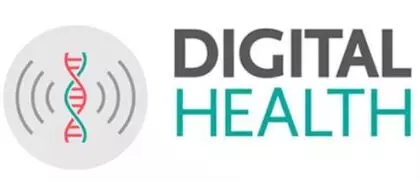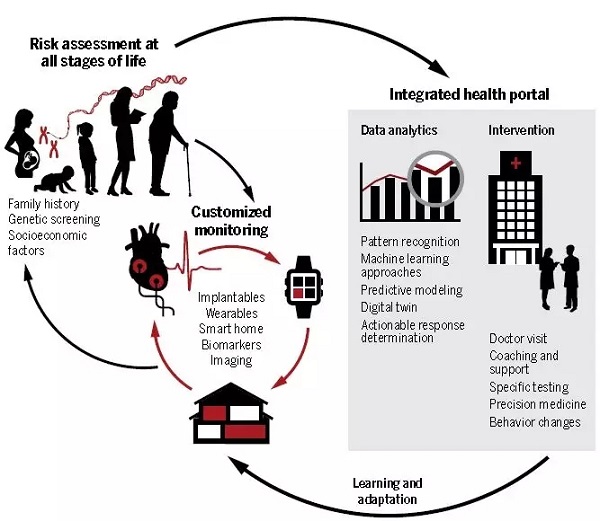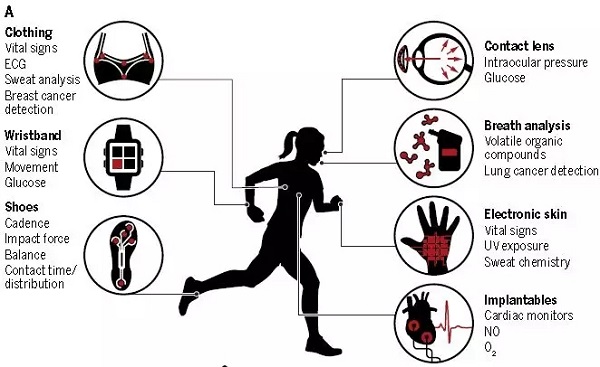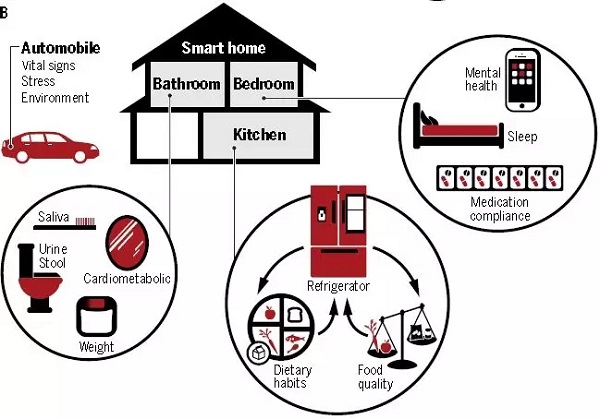Precision and Numbers - The Important Direction of Medical Development in the Future
Recently, Science Translational Medicine magazine published opinions on precision medicine and digital monitoring equipment. The article believes that precision medicine makes the field of health intervention only after the occurrence of the disease, and gradually turns to the early monitoring and diagnosis of individuals based on digital equipment. Prevention of diseases and treatment of "no disease" refers to the same height as the treatment of diseases.The digital monitoring equipment can provide detailed and comprehensive body parameters for each person, so that the medical institutions become more active in the face of possible diseases, and of course, the corresponding equipment technology development.

Usually the development of the disease begins in the sub-health period until the appearance of symptoms, and finally the patient seeks medical help. In the past, we did not attach much importance to disease prevention, but instead focused our development on new therapies.However, while chronic diseases and late-stage diseases have brought continuous suffering to patients, they have also brought a huge economic burden on families and society, and have made people once again attach importance to disease prevention.Traditional disease prevention depends on the physical examination once or several times a year to find early disease. In addition to routine examination items, it can only rely on the age and family history as the basis for judgment.The true concept of preventive health can not be separated from accurate and timely early diagnosis. The development of digital medical technology has created very good conditions for us.

Figure 1 Overview of future precision healthcare (images from reference articles)
A major role of precision medicine is to fundamentally prevent the early stages of the disease, so that everyone can actively maintain health, thereby reducing the pressure on the entire medical system.As shown in Figure 1, from the time of birth, even before birth, the probability of suffering from certain diseases was determined by genetic screening or individual genotype.This information can help personalize his digital health monitoring equipment, including wearable accessories and home appliances. These monitoring devices are able to test the environmental index and the individual's physiological parameters and transmit the data to the health agency in real time.Health organizations then give individual advice through analysis of data, or notify medical intervention in a timely manner. Low-risk individuals, for example, observe changes in the individual's diet or weight, and give advice on lifestyle changes;Or provide a plan for how the family cares for the individual; complicated diseases are notified to the clinic or the hospital as soon as possible. The digital devices that implement these monitoring include the following two aspects.
Active monitoring - wearable devices
Precision Medicine seeks to integrate monitoring and diagnostics into every day of our lives. Wearable digital monitoring devices have developed rapidly over the past few years. From the $50 million market in 2013, it is expected to reach $650 million by 2020.Although the cost of universal wearable devices is not low, it is estimated that in the next 25 years, related developments can help the health care system to save nearly 200 billion US dollars.Some wearable monitoring devices are shown in Figure 2, except that smart phones that we understand collect health data, and Fitbits that can be worn on the wrist or Apple's Apple Watch. These small devices can monitor simple parameters such as heart rate and pulse oximetry, and even more complex parameters such as electrocardiogram and arrhythmia.A more comprehensive device can monitor the entire body by placing clothes; there are epidermal monitors that can adhere to the skin surface like "temporary tattoos" to monitor changes in vital signs and external environment. Others include the monitoring of breast temperature changes and endogenous photoacoustic signals to predict breast cancer underwear.

Figure 2 Digital wearable device monitoring (picture from the reference article)
Passive monitoring - smart home
Wearable digital devices can provide continuous data, which is its advantage, but if we do not want to wear these devices, it will not be able to monitor. For example, wearing uncomfortable feelings, inconvenient use, etc., many factors will affect the individual's compliance with these digital devices. At this time, passive monitoring equipment highlights their characteristics.
In the future, digital smart homes paints us a picture of this kind (Figure 3): In the morning, we take a look at the mirror, and its built-in radar can scan our various signs. When brushing our teeth, the toothbrush will automatically analyze our saliva; Toilets can be targeted to detect disease markers in our feces and urine;When driving, in-vehicle monitoring can use our daily conversation and driving behavior to judge whether we are over-stressed or fatigued, and we can even avoid alcohol and alcohol analysis to avoid drunk driving; judging by the use of mobile phone law, send and receive information to determine the increase or decrease Whether there is depression or anxiety, timely counseling for psychological interventions; lying in bed at night can monitor our heart and lung function in real time.The above scenarios, such as science fiction, are not out of reach. Wize Mirror, a digital mirror product, has integrated a large number of sensors and cameras to analyze images to determine body weight, whether there is a signal with high pressure, skin spectroscopy to detect cholesterol levels, and gas sensors to analyze alcohol in the breath or to smoke. TOTO's smart toilet can collect urine to detect sugar levels and help diagnose diabetes.

Figure 3 Passive monitoring of digital home devices (images from reference articles)
The challenge
How to monitor various vital signs and collect various types of biomarkers is not the biggest challenge. The biggest challenge is how to analyze and judge these data and markers.For example, pricking your fingers to collect blood to detect blood sugar is not convenient and difficult for the patient to accept. In recent years, many non-invasive methods have also been developed, such as the use of contact lenses to monitor the sugar content in tears, but only collecting peripheral interstitial fluids to analyze sugar content does not correlate well with blood glucose.Another problem is how to reduce the amount of data collected, to find useful parameters. If you just keep reminding individuals of a good lifestyle, controlling weight and rest, these small things are likely to backfire, causing individuals to "propose fatigue." Medical institutions should still provide disease diagnosis and "high-level" health advice.
The precise medical and digital devices introduced above will become an important direction for the future medical development, but the process may be tortuous. There are still many issues that need to be addressed, including how to accurately predict disease risk, the disclosure of early-stage disease biomarkers, the analysis of late-stage data analysis to avoid miscalculation, and the behavioral economics of individual participation.Many biopharmaceutical companies and software companies have participated in the development of this area. There are a number of companies that have ideas like Apple plans to use Apple Watch for cardiovascular parameter monitoring.Last week, Novartis announced a partnership with Pear Therapeutics, the first echelon of digital medicine, to develop a mobile app to help people with schizophrenia and multiple sclerosis. This is also a microcosm of the current development.Accuracy and figures, even if we only achieve a part of it, will have a profound impact on our human health and the development of health care.